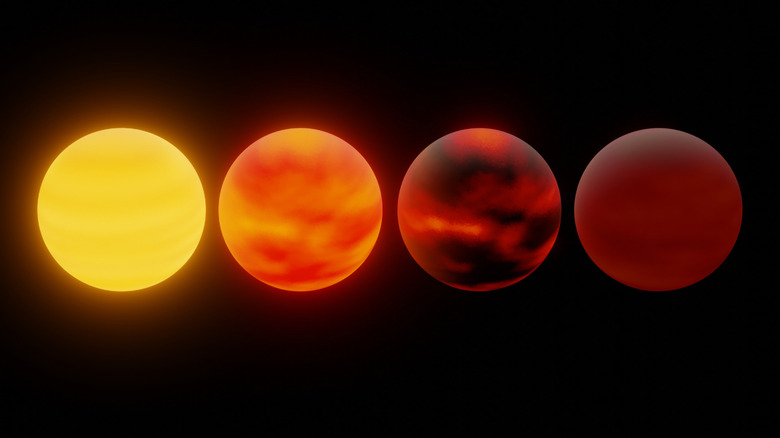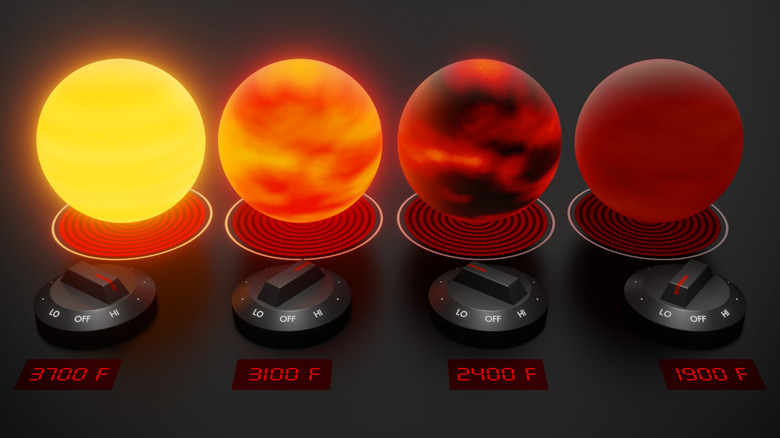These Distant Planets Are So Hot They Have Clouds Made Of Sand
Out in the depths of the galaxy are all sorts of unusual exoplanets, from freezing cold ice giants to boiling ultra-hot gas giants — and on many of these odd worlds you'll find strange weather as well. On some planets, the temperatures are hot enough that rock minerals are vaporized and turn into clouds. Now, a new study explores how these strange sand clouds form (via JPL). The research looked at a class of planets called brown dwarfs, which are bigger and hotter than most planets but aren't big enough to sustain internal fusion like a star (via NASA). Astronomers have identified plenty of these worlds, but it wasn't clear which ones would be good candidates to search for evidence of clouds of sand. The technical term for these minerals, which make up most of the rocks on Earth, is silicates.
To find likely planetary candidates, the researchers used data from the now-retired Spitzer Space Telescope, the lead author of the research published in Monthly Notices of the Royal Astronomy Society, Genaro Suárez of Western University in London, Ontario, explained: "We had to dig through the Spitzer data to find these brown dwarfs where there was some indication of silicate clouds, and we really didn't know what we would find," Suárez said. "We were very surprised at how strong the conclusion was once we had the right data to analyze." The researchers found that there is a definite temperature range for planets on which these silicate clouds form: between 1,900 degrees Fahrenheit (about 1,000 degrees Celsius) and 3,100 Fahrenheit (1,700 degrees Celsius).
Hot, hot exoplanets
An exoplanet has to be very hot for rock to vaporize, as these brown dwarfs are, but not all brown dwarfs are in the right temperature range for this phenomenon to occur. Some are too hot, which causes the clouds to vaporize completely, while others are too cold, and the silicates either sink through the atmosphere or condense and fall to the surface as rain.
This research doesn't only apply to brown dwarfs though. It is possible that silicate clouds could also form in our solar system on Jupiter, where the temperatures of the atmosphere are higher at the bottom of the atmosphere than at the top. This occurs because of the pressure created by the atmosphere, which pushes down on the lower atmosphere layers and heats them up. There could be silicate clouds hiding in the lower layers of Jupiter's atmosphere that we can't see because of the upper atmosphere.
The research helps refine our overall understanding of exoplanet atmospheres as well, which is important for not only studying distant worlds but also understanding our own planet, according to co-author Stanimir Metchev, also of Western University: "Understanding the atmospheres of brown dwarfs and planets where silicate clouds can form can also help us understand what we would see in the atmosphere of a planet that's closer in size and temperature to Earth."

